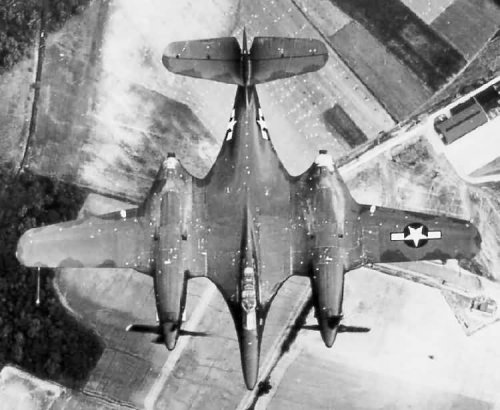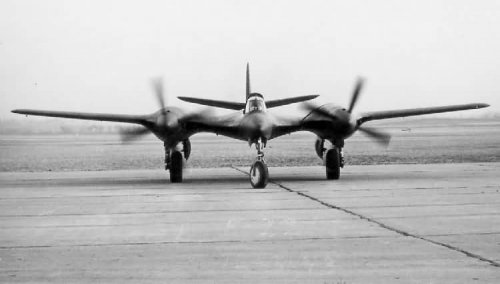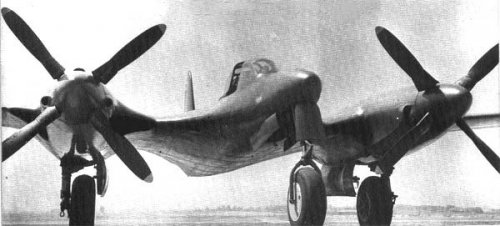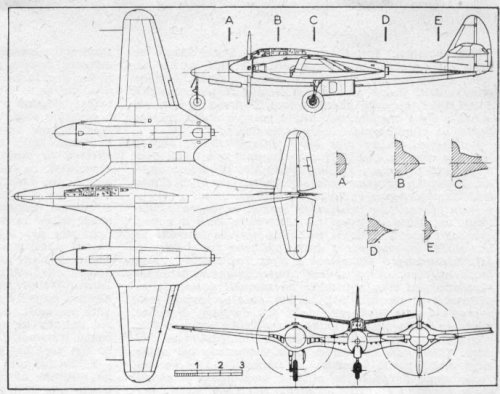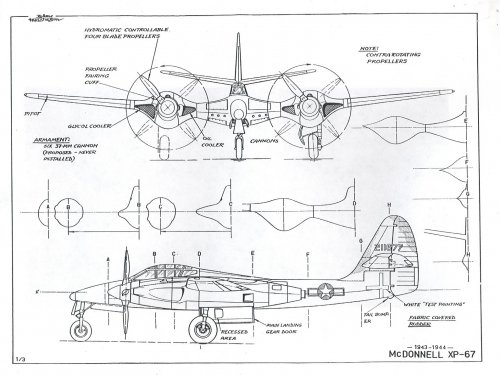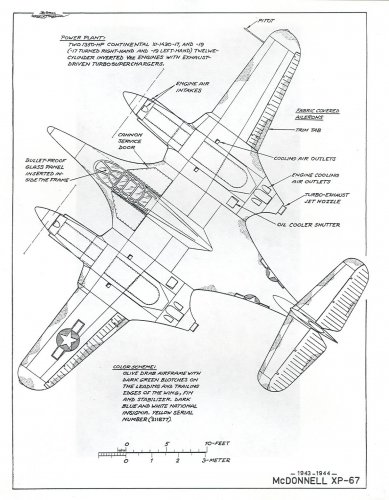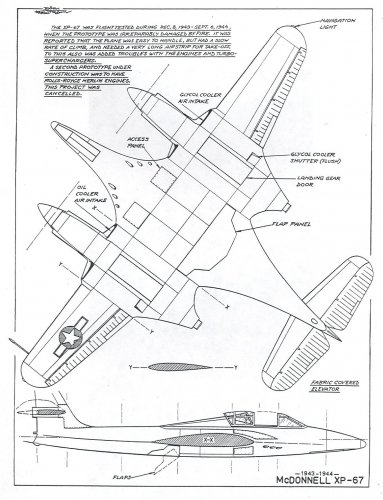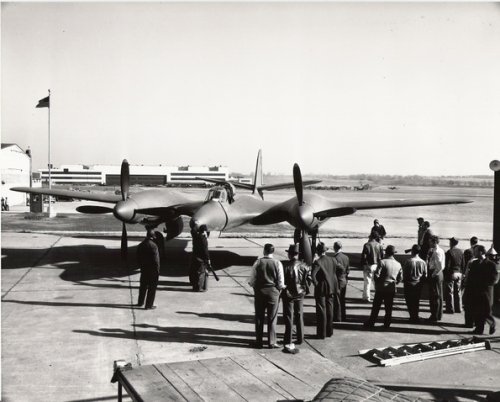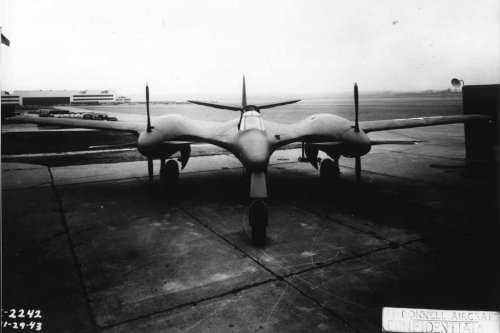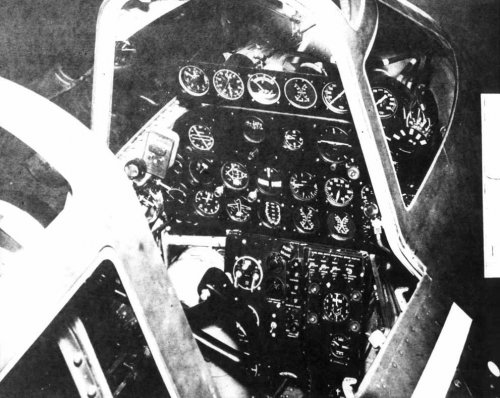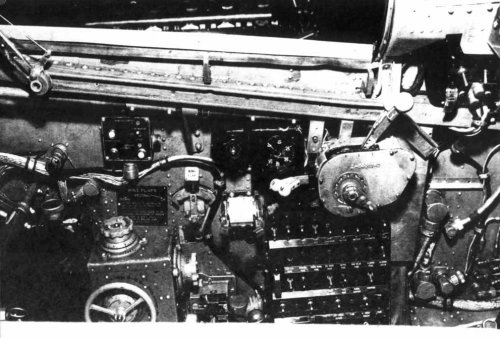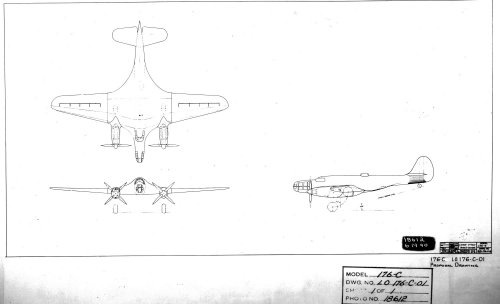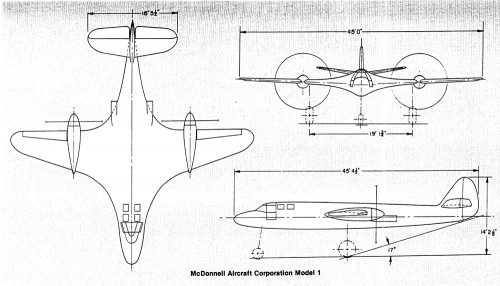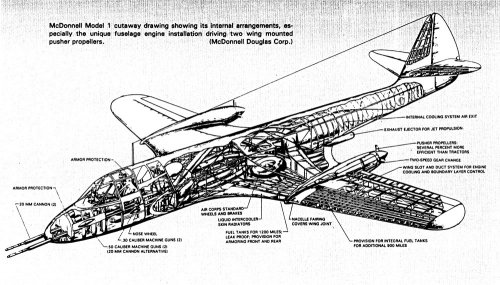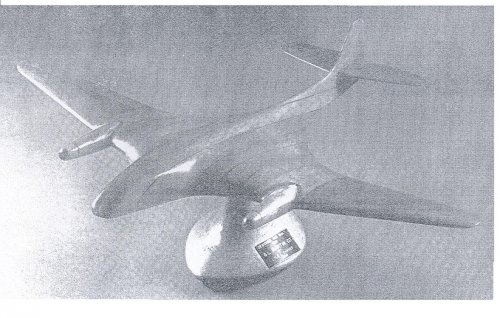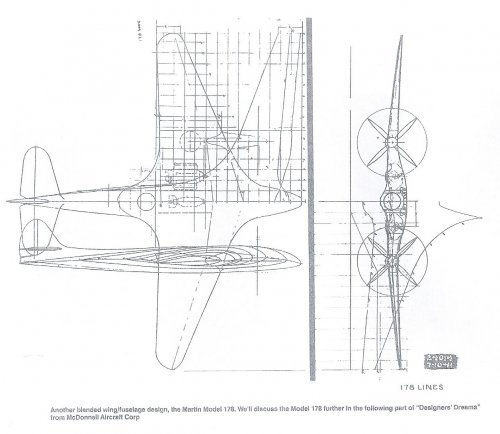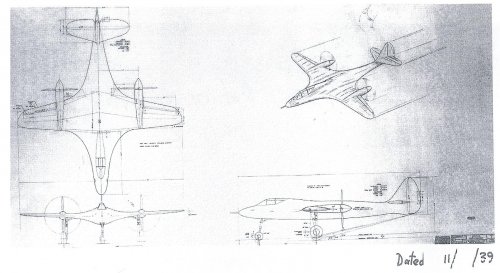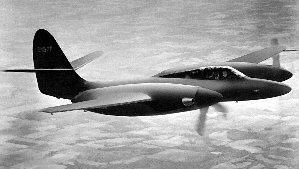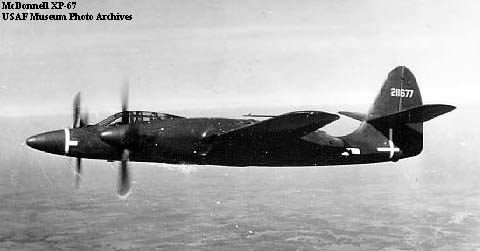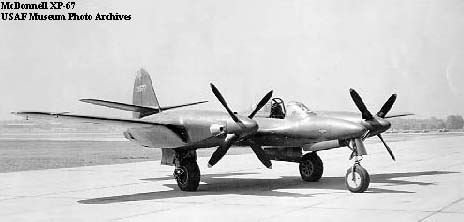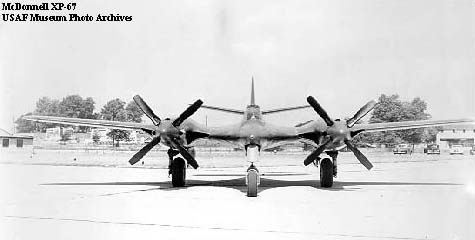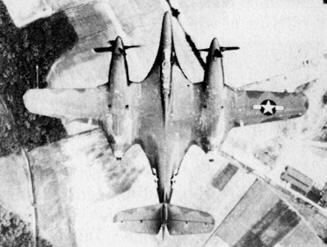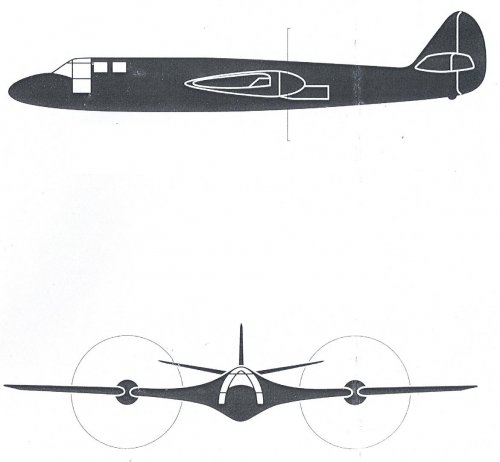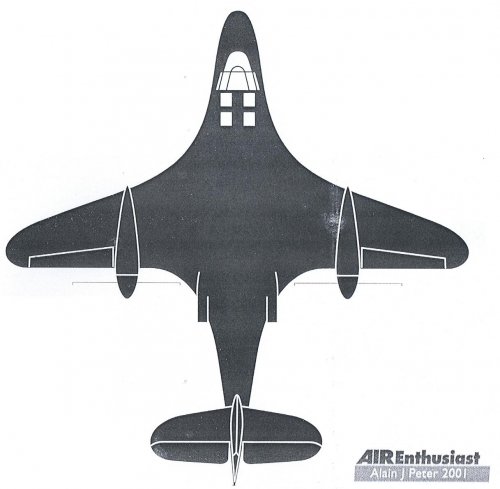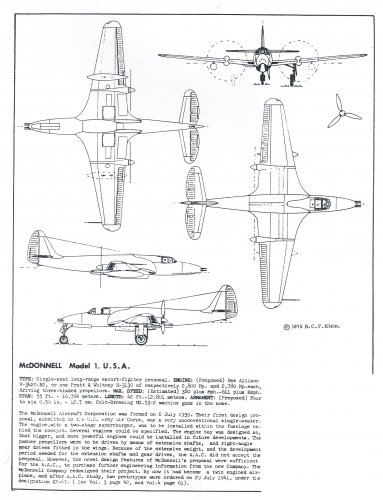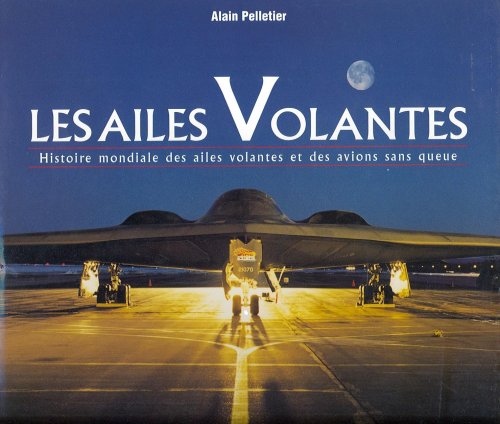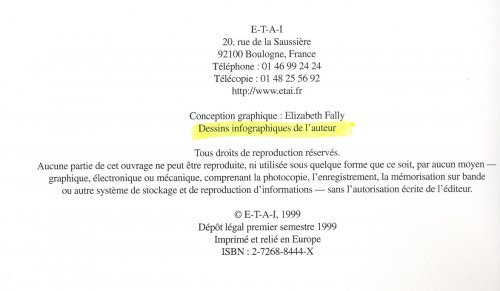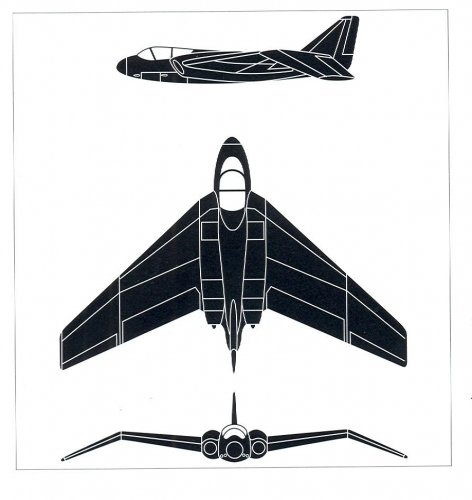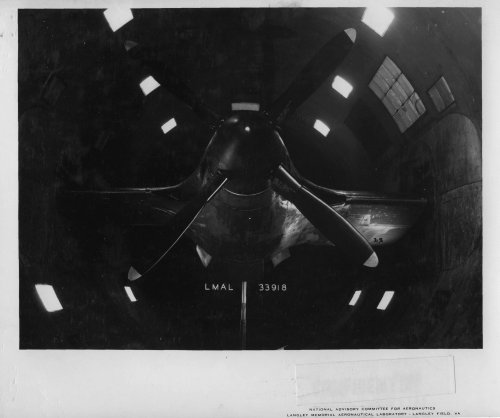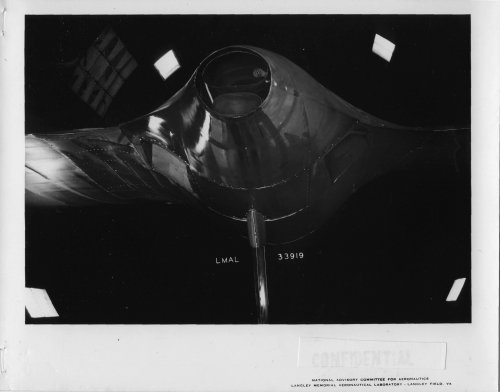Some background on the XP-67:
McDonnell Acft Corp. first approached the AAF regarding a fighter design in the fall and winter of 1939. This led the AAF to include McDonnell in its Request for Data R-40C, sent out on 8 March 1940. McDonnell answered w/a proposal for what it called Model I on 11 April; the design was "of fairly conventional shape, having the [submerged] powerplant located aft of the pilot and driving 2 two-stage pusher propellors located immediately back of the wings by means of extension shafts and right angle gear drives." The proposal called for either an Allison V-3420-B2 or a P&W H-3130. The proposal lost out, but placed well enough for the AAF to purchase the data for $3,000.
McDonnell came back with revisions to Model I and a new Model II on 30 June 1940; the latter was a complete revision of Model I, having two Continental engines in a "conventional twin-engined arrangement with provisions for a crew of two." The AAF rejected both on 31 July because their cost/performance improvement ratios weren't attractive enough. Tests of various shapes and planforms in the University of Detroit's windtunnel resulted in McDonnell's Model II-A proposal, submitted on 24 April 1941. The proposal was revised in response to AAF Materiel Comd comments and resubmitted, with the resulting Model II-A offer "very similar" to the final design. The initial design's armament consisted of six .50 cal machine guns and four 20mm cannon; propulsion was via two Continental XI-1430-1 engines. McDonnell's Model II-A design (w/add'l minor revisions) received the go-ahead in May under Classified Project No. MX-127 and Expenditure Order 431-25. The Designation 'XP-67' was approved on 29 July, and on 30 September 1941, McDonnell received a $1.6M contract (W535-AC-21218) for two examples, a mockup, spin model, nacelle tests, final data, and reports; the first airplane was to be delivered on 29 April 1943.
Add'l note of interest: In April 1943, McDonnell proposed to install dual-rotation propellors on the second aircraft. Wright Field concurred, calculating that the change would add 7-10 mph, improved rate of climb (400 ft/min @ 25,000 ft) and an increase in combat ceiling. Accordingly, action was initiated to provide contra-rotation engines (not specified) and "Curtiss 512-551 dual-rotation propellors." Of course, the whole program was subsequently cancelled after Acft #1 (42-11677) was damaged beyond economical repair by an in-flight fire on 6 September 1944. When it was grounded, 677 had only flown a total of 43 hours. Aircraft #2 (42-11678) was only 15% complete when the axe fell.
Source: AAF Technical Rpt, "Final Report of the XP-67 Airplane," n.d. [NPRC 342-69A-0449, Box 56]

